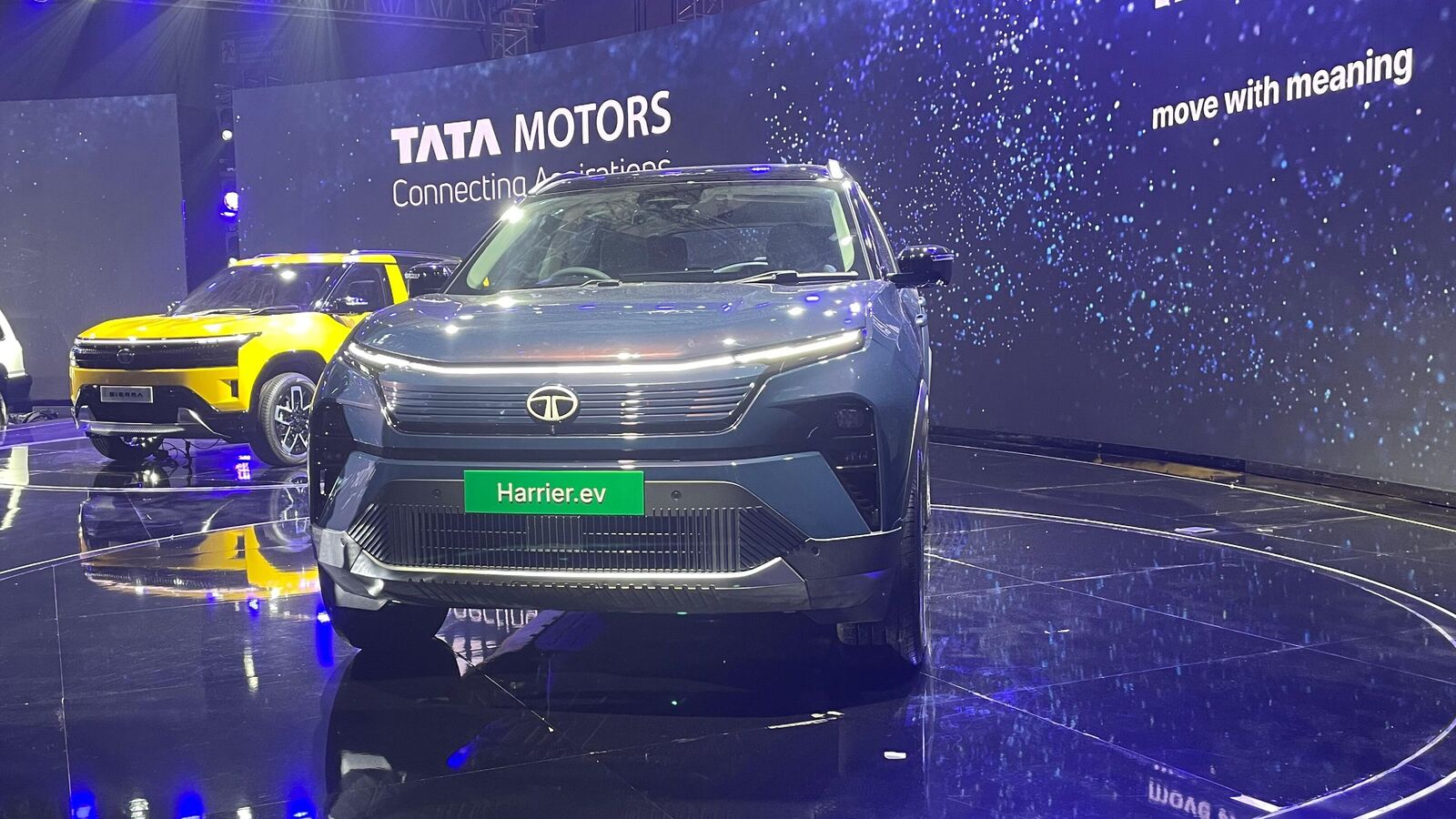iac-and-maserati-break-speed-record-at-kennedy-space-center
The US space shuttle Discovery touches down on runway 15 at the Kennedy Space Center (Photo by ... [+] ROBERTO SCHMIDT/POOL/AFP via Getty Images)
POOL/AFP via Getty ImagesThe touchdown above occurred at the Launch and Landing Facility (LLF) at the Kennedy Space Center in Port Canaveral, Florida on 12 June, 2000, after a 10 day mission which included the last docking of a US space shuttle with the Russian space station Mir. The LLF is one of the longest runaways in the world at 15,000 feet (2.8 miles) and managed by Space Florida under a 30-year agreement with NASA. Space Florida promotes and grows Florida’s leadership in the space economy. and loans its facilities to commercial customers for aerospace innovation, research, manufacturing, and testing.
On March 3, 2025, Indy Autonomous Challenge (IAC) and its partners organized an event in which an autonomous commercial Maserati MC20 Coupe with no human driver on board raced on this hallowed runway and broke a speed record at This exceeded the previous record in 2022 at the same track of with a specially designed racecar (IAC AV-21). It also exceeded the record set by an autonomous Maserati MC20 Coupe at the Piacenza Military Airport track in November 2024
Figure 1: Autonomous Maserati MC-20 Coupe with PolyMOVE AI Stack at the Kennedy Space Center
Indy Autonomous ChallengeIAC is a not-for-profit organization, and has been at the forefront in organizing autonomous racing competitions since 2020. University teams from the United States, Germany, Italy and Korea compete. Recent events at the Indianapolis Motor Speedway in September 2024 and the Las Vegas Motor Speedway during the January 2025 Consumer Electronics Show broke multiple speed records during individual and multi-racecar events. Apart from the thrill, emotions and excitement, a significant amount of learning and intellectual property in the realm of high speed autonomy and physical Artificial Intelligence (AI) has been generated.
The autonomous racecars used by each team are identical in hardware - the engine, chassis, and other mechanical systems, as well as the sensing and compute systems used as part of the AI driver. IAC designs, engineers, and assembles the racecars and each team develops its own software stack that incorporates perception, localization, vehicle dynamics control and path planning (speed, lane changes, braking, etc.). Once the race starts, the AI driver is on its own, with no communications with the team. Race tactics (track, weather, wind speed, competitor strengths and weaknesses) are simulated in advance and tuned during test runs. The purpose is two fold - first to develop the intellectual property (IP) around high speed autonomy (sensors, perception, compute) and secondly to nurture talent in physical AI and autonomy.
Paul Mitchell is the CEO of IAC. He has recently been appointed as the CEO of Aidoptation, a Belgium-based for-profit company, established as a joint venture between IAC, the Limburg investment company LRM, and Ethias Ventures. Its goal is to leverage the collective IP around high-speed autonomy including the robotics hardware systems and low level software developed by IAC and the best AI driver software contributions from the university teams that compete in IAC events. Aidoptation seeks to address the challenge of high speed edge cases on public roadways, and work with autonomy companies to incorporate aspects of the AI driver to deploy vehicle autonomy safely in these environments. The plan is to build and test a fleet of autonomous cars equipped with the AI driver, and collect 100,000 km data on high-speed roadways in Belgium and Italy within the next two years.
So why is this event significant ? Mr. Mitchell: “
The AI driver for this event is developed by Politecnico di Milano, Italy’s largest scientific-technological university, in concert with Michigan State University (MSU) and the University of Alabama. The PoliMOVE-MSU team competed in the Indianapolis event (in which it won the 2-car passing race, beating its fellow Italian competitor Unimore from University of Modena and Reggio Emilia with an impressive passing speed of 170 mph). It also competed in the 4-car passing event in Las Vegas, but had to suspend it effort due to a sensor failure.
Professor Sergio Savaresi is the leader of the PoliMOVE team. He indicated that transitioning the AI stack from the IAC AV-21 platform to the commercial Maserati was straightforward. Relative to the track events in Indianapolis and Las Vegas, the perception challenges are simpler since there are no other cars and obstacles. The straight and flat roadway is easier to deal with as compared to sharp curves on the oval tracks. The main challenge is time and control latency - at these high speeds and cross-winds, adjustments to correct localization errors and stay on trajectory can destabilize the vehicle dynamics. The AI driver needs to recognize this and adjust with very low latency to prevent vehicle instability and accidents.
The record breaking speed of 197.7 mph is actually an average over a 100 m section of the roadway, recorded in each direction (N-S and S-N). This is done to compensate for the difference in wind speed and direction. Interestingly, it takes about 8.5 minutes to reach the maximum speed of 199.5 mph in one direction and 15 minutes to reach 195.9 mph in the opposite direction. Wind resistance and angle plays a significant role in this. The speeds are recorded using two high precision GPS devices since standard sensors like 4-wheel rotational speed, engine rotational speed, etc. are not suitable for absolute speed measurement due to bias caused by wheel slip and tire rolling radius effects.
The results are impressive and impactful according to Professor Savaresi because The autonomous speed record is close to the maximum rated speed (200 mph) for the Maserati MC-20.
Maserati’s famous Trident logo symbolizes a 3-pronged vision to combine to deliver cars which symbolize "Apart from the autonomous Maserati that participated in the Kennedy Space Center event, a second Maserati MC20 Cielo convertible continued its American journey by joining the convoy of the 1000 Miglia Experience Florida (Figure 2):
Figure 2: Maserati MC20 Cielo 1000 Miglia Experience Florida
Maserati and Indy Autonomous ChallengeThe same vehicle participated in the 2023 edition of the historical 1000 Miglia race where it covered approximately 60 km in autonomous mode across Italy.
It is surprising that a high-performance sports car company like Maserati would be interested in autonomy, since the whole point of such cars is the pure thrill of driving. But it makes sense since the iconic company is now owned by Stellantis which certainly has a huge interest in ADAS and vehicle autonomy for its more mainstream commuting cars brands like Fiat, Chrysler, Citroën, Opel and Vauxhall. Stellantis had this to say about the event: “Building on its previous record, this achievement highlights the power of innovation, collaboration, and Maserati’s commitment to pushing the boundaries of technology”.
According to Maserati, the learnings from this event are critical for the advancement of AI and autonomous technology in the automotive landscape. Maserati is proud to support such a forward-thinking achievement as it relates to improved designs and advancements of safety-focused technologies.”
Events that promote autonomous racecars and high performance consumer vehicles are thrilling because speed and competition between vehicles is something that has fascinated people for over a century. But it also has a role to play in pushing the boundaries of computer perception and physical AI, especially as autonomy in transportation of people and goods becomes more mainstream. The learnings from such events will go a long way in achieving these goals safely and efficiently.











